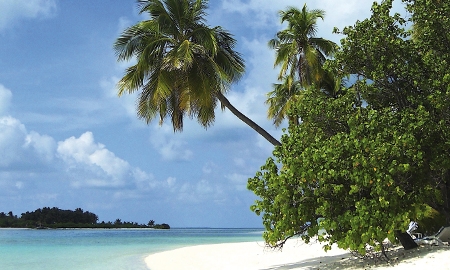During the last 100 years or so, as with many other of Honduras’ Central American neighbors, the United States has had more influence on the nation than any other country, leading to both sides benefiting from the enhancement of closer relations.
U.S. involvement in Honduras dates back to the turn of the twentieth century when United States-owned banana companies began expanding their presence on the north coast. Since these first ventures, while the U.S. has traditionally used Honduras as a strategic military base (most significantly during World War II and most prominently throughout the 1980s), it is their economic ties that have become most enduring as we’ve entered the new millennium.
Although economic activity would initially be one-way, with the United States famously providing large amounts of financial assistance throughout Latin America during the 1960s under John F. Kennedy’s ‘Alliance for Progress’ program, as well as further massive amounts of aid in the later Caribbean Basin Initiative, it was during the 1990s that the U.S-Honduras economic partnership really began to accelerate.
It was in 1992 that the Honduran Government took the first important steps towards improving the trade and investment climate in the nation with the approval of a new investment law. Meanwhile, under the rubric of the ‘Enterprise for the Americas Initiative’ (EAI) – a US foreign policy – the two countries signed a trade and investment framework agreement which paved the way for eventual free trade.
| The CENTRAL AMERICAN FREE TRADE AGREEMENT (CAFTA) has seen business opportunities boom and completely diversified the composition of bilateral trade and investment |
Indeed while both U.S. trade with (and investment in) Honduras expanded over the course of 1990s and early 2000s, it was not until 2006 and the entering into force of the Central American/Dominican Republic Free Trade Agreement (CAFTA-DR) that free trade between the United States and Honduras was finally realized.
As a result, CAFTA has seen business opportunities boom and completely diversified the composition of bilateral exchange. This is largely due to the fact that the treaty eliminates most tariffs and other barriers for U.S. goods destined for the Central American market, provides protection for U.S. investments and intellectual property, and creates more transparent rules and procedures for conducting business. CAFTA also aims to eliminate intra-Central American tariffs and facilitate increased regional trade, benefiting U.S. companies manufacturing in Honduras.
It comes as no surprise then that today the U.S. remains by far Honduras’ largest economic partner, supplying 46.2% of Honduran imports and purchasing 33.4% of Honduran exports in 2011 (excluding maquila trade). Bilateral trade between the two nations totaled $10.6 billion in the same year.
Furthermore, around 80% of U.S. goods now enter the region duty-free (with tariffs on the remaining 20% to be phased out by 2016) while exports to the Central American country reached $5.7 billion in 2012 and are on pace to double by 2014 as targeted by the ‘National Export Initiative’.
Aside from the ever increasing trade, the ease of doing business in Honduras has also markedly improved. According to the 2013 World Bank ‘Doing Business’ index, the time required for establishing an enterprise in Honduras is an average of 14 days, significantly less than the average of 53 days in Latin America and the Caribbean.

0 COMMENTS